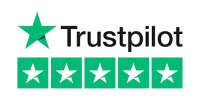4 Steps to Successfully Roll Out Salesforce (Part 1)
By Heather Black

You put all of the hard work into designing and building a Salesforce platform, but quite often rolling out Salesforce is the area where budgets get cut. This has significant consequences as not planning a good roll out strategy can have a significant impact on the adoption of the Salesforce System by your end-users. It’s not just about training, it’s about quality testing, running a great Salesforce Demo, selling Salesforce to stakeholders, and comprehensively training end-users.
Join us over the next four weeks as we share tips from Heather’s book, ‘How to be a Super Salesforce Consultant’ that will help you to to set up your Salesforce users for success with these key steps:
- Part 1 – Quality Testing
- Part 2 – Running a Great Demo
- Part 3 – Selling Salesforce
- Part 4 – Training End-Users
Sign up to our Weekly Career Boost Bulletin to stay up to date and get notified when each of the Tips for Salesforce Consultants blogs are shared.
Also, get 5% off any of our Salesforce courses when. you subscribe to our newsletter.

The consultant says, ‘Why isn’t this working?’
As a consultant, don’t forget to test your work yourself before it’s rolled out for user testing.
What can go wrong?
If you don’t do your own quality testing before user testing, and there are errors, it will be highly embarrassing when you have to try and uncover and resolve (if you can) the issue in the middle of a testing session. I think we have all been there, but it’s best to try and avoid it if you can.
How to get it right?
It is a highly recommended that you test the Salesforce system before roll- out into production and before user testing, to ensure it’s working as expected. There are two stages to quality testing: technical testing, where you assess if the product is working effectively without errors; and functional testing, where you assess if the product is fit for purpose and your end users. If you’re ready to take the next step in your Salesforce testing journey, you may want to considering adding a test automation tool to your workflow.
Test Automation
With myriad options available, selecting the right tool for your team’s needs can be a daunting task. There are many aspects to consider before making your selection, and every test automation tool has its benefits and drawbacks. They all provide different levels of ease of use, training, scalability, future- proofing, security, level of support, pricing and more, but how do you know what factors will make or break your team’s strategy?
This will depend on the size and scale of your team, as well as what stage of the testing journey you are at. If you’re just getting started with manual testing, for instance, you may prioritise a vendor with stellar post- sale support and training to get you up and running, but if you’re well into automated testing already, it may be more helpful to look for a solution that makes your existing tests more efficient, saving you time and money.
The process of evaluating a testing tool or solution can be simplified into seven key areas, as follows:
1. Test resilience or fragility
2. Polymorphism and reusability
3. Ease of use and learning
4. Testing adjacent systems
5. Support
6. Training
7. Customer success
Below is a rundown of what to look for in each category and some suggested questions and demo requests you can put to the vendor.
Test Resilience or Fragility
This concerns to what degree updates to the Salesforce system or updates to customisations are likely to break tests and cause rework. Salesforce updates its platform multiple times per year, which can cause automated tests to break unless your testing tool was designed to operate with Salesforce. Between Salesforce updates, changes to customisations can also cause automated tests to break. Tests that break lead to reworks, higher costs and other negative consequences.
Here are some demos to request during your evaluation to test this area:
- Build a simple customisation to create an opportunity.
- Create a test script that tests that the opportunity has been successfully created.
- Make changes to the page layout, such as adding fields or changing the location of the fields on the page, and run the test case again.
- Create a test and show me how it continues to work when you move a button on the layout, for example.
- Show me, step by step, how your testing solution handles shadow DOM elements.
Polymorphism and Reusability
To what extent does the solution adapt to the needs of the rest of the organisation by utilising a single test that can run across numerous contexts?
The technology that makes tests resilient also enables polymorphism (where one test can run across numerous contexts) and reusability. Polymorphic tests that are reusable across your workflow reduce the time, effort and expense of creating and maintaining tests. Fewer tests with more coverage mean a higher- quality solution that can evolve more quickly and easily.
Below is a demo to request during your evaluation to test this area:
‘Using the test from the prior demo (test resiliency), run that same test in a different environment (eg, validation versus development) in a different language (eg, French), on a different browser, for a different user profile (eg, a marketing VP/director) with special permissions (eg, that reveal sensitive data like total bookings companywide).’
Ease of Use and Learning
What skills and experience levels are required to create, maintain, and run tests?
Many people involved in Salesforce customisations are considered ‘citizen developers’ – folks who may not necessarily be experts in programming languages and frameworks. It is important that the skills required to test Salesforce customisations are similar to the citizen developer skills needed to create the customisation, so that these testers can easily work with their counterparts as they participate in, or even fully own, the testing process.
Here are some ways to test this area in your evaluation:
- Build a test case with the solution to see how easy and intuitive it is.
- Try to interact with the test case in real- time: add, delete, update steps, pause, rewind etc.
- Run a test script for a test that needs to be debugged and see if it passes/fails in real- time or if you must run the test over again once it is fixed to confirm the issue is resolved.
Testing Adjacent Systems
To what extent is the system capable of running end- to-end tests that reach adjacent non- Salesforce systems?
Every Salesforce platform connects to other enterprise systems and custom integration points, and it’s important that a Salesforce testing solution can reach out to other systems and test workflows end to end.
Here is a demo to request during your evaluation to test this area:
‘Test an end- to- end scenario such as email to case, website lead to Salesforce, lead to cash, etc.’
Support
To what degree does a vendor offer ongoing support through demonstrations, one- on- one consultations, online help centres, trade show presence etc?
The level of ongoing support a vendor provides their customers after closing the sale is essential to consider. This support can come in a number of verticals: demos, one- on- one consultations, online help centres and community forums, a consistent trade show presence and more. The more willing a vendor is to help their customers in the long run, the stronger the relationship will become and the more trust you can have in the product, leading to greater overall satisfaction.
Here are some questions you can ask during your evaluation to test this area:
- After the initial setup consultation, how do you provide continued support to your customers?
- Do you have an easily accessible online help centre or a community forum?
- How quickly will I be able to connect with an expert from your team with questions, and what hours are you available?
- Are you attending any upcoming trade shows or conferences in my area?
Training
Whether or not a vendor offers additional or ongoing training services beyond the initial consultation or setup is another important consideration.
A good vendor will prioritise continued education. As product updates are made and new features are introduced, vendors should offer readily accessible courses that users can take in their own time to brush up their skills. They can also offer continued training through webinars, blog posts and white papers.
Here are some questions you can ask during your evaluation to test this area:
- Do you offer training courses for users to expand their product knowledge?
- Do you offer free webinars for customers?
- Do you have a blog?
- Do you have a library of white papers available for browsing?
Customer Success
The best indication of whether a vendor is the right fit for your team is their customer success stories. Look for the number of customers who have shared positive accounts of using the vendor’s products (and also make note of any negative feedback), and spend time gauging the calibre of reviews from reputable industry review sites, peers and analysts.
Here are some questions you can ask during your evaluation to test this area:
- Do you have customer case studies or success stories available from within our industry?
- When I was researching your company, I noticed that there was negative feedback published on [site] regarding [topic]. Can you speak about this feedback, such as ways your company has improved this area of business?
- Do you have any reviews you could provide from reputable industry review sites, peers and/or analysts?
- Would any of your existing or past customers be willing to answer a few questions?
What should YOU do next?
By the end of this blog article, you should be more informed about what quality testing is, why it’s important, what an automated testing tool can offer you and how to go about selecting the tool that is right for your project or organisation.
Thank you to Provar for sponsoring this chapter taken from the ‘How to be a Super Salesforce Consultant’ book which is available to buy now from Amazon.
Provar were the first Salesforce testing app and can transform your testing experience, saving you time and costs, accelerating your delivery and catching bugs before they disrupt users. Globally, they operate out of the UK, USA and India and with over a hundred employees and forty partners, they are a trusted app worldwide.
If you love this content, you can also learn more and develop your skills by joining her Consultancy Skills Course. To find out more about this course, visit our course training page and get your info pack.
Find the right Salesforce course for you.
At Supermums we deliver a range of Salesforce courses that provide structure, quality and level of accountability which generates the motivation. Find out more about our training courses today and get started straight away.
Looking for a job or to hire a candidate?
Supermums also has an award-winning recruitment company and we specialise in placing candidates in flexible roles within the Salesforce ecosystem. Talk to us if you’re looking for your next role, or are an employer looking to find the right candidate.
Written By:
Subscribe To Our Weekly Top Tip Bulletin
Get Updates And Learn From The Best














